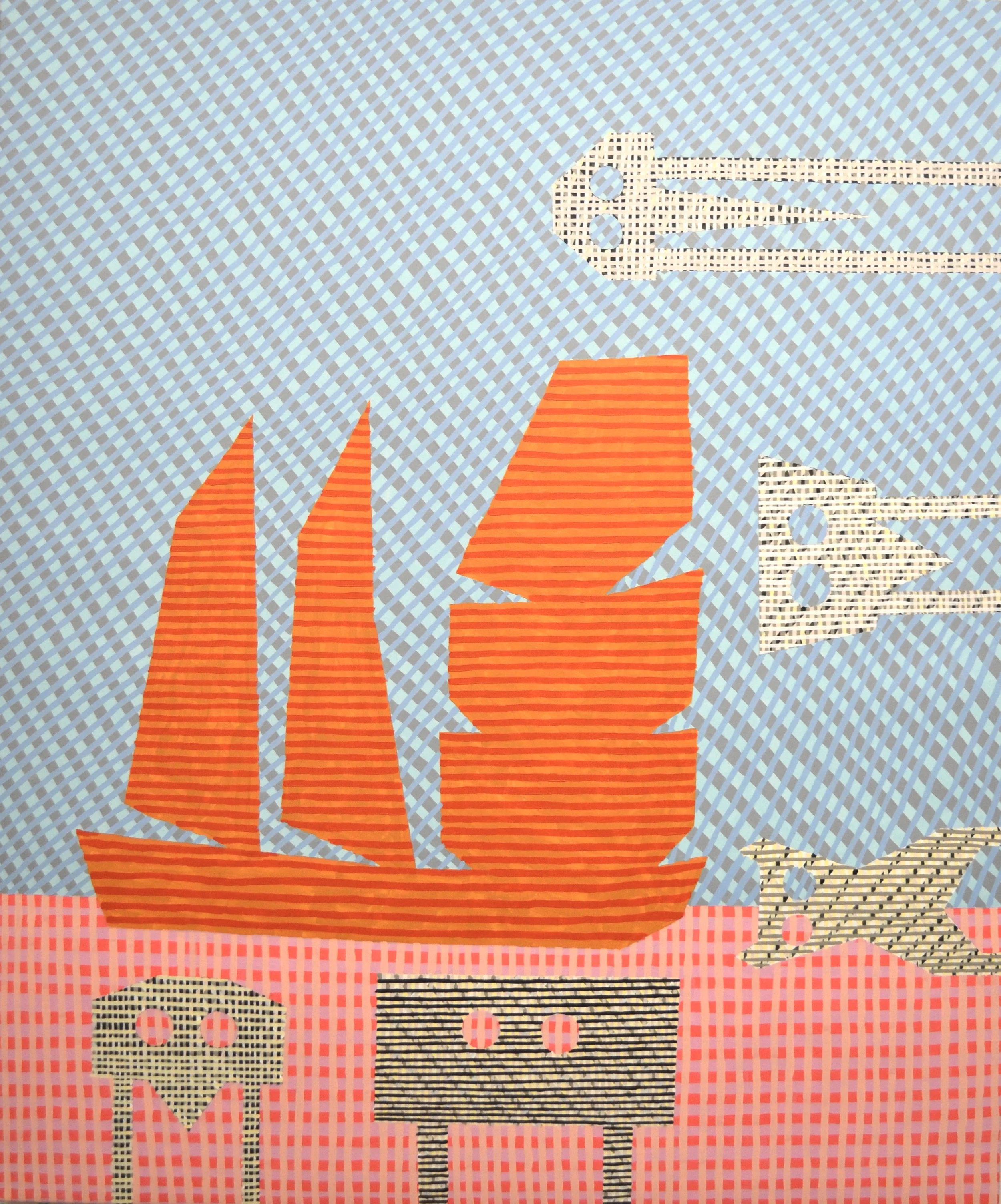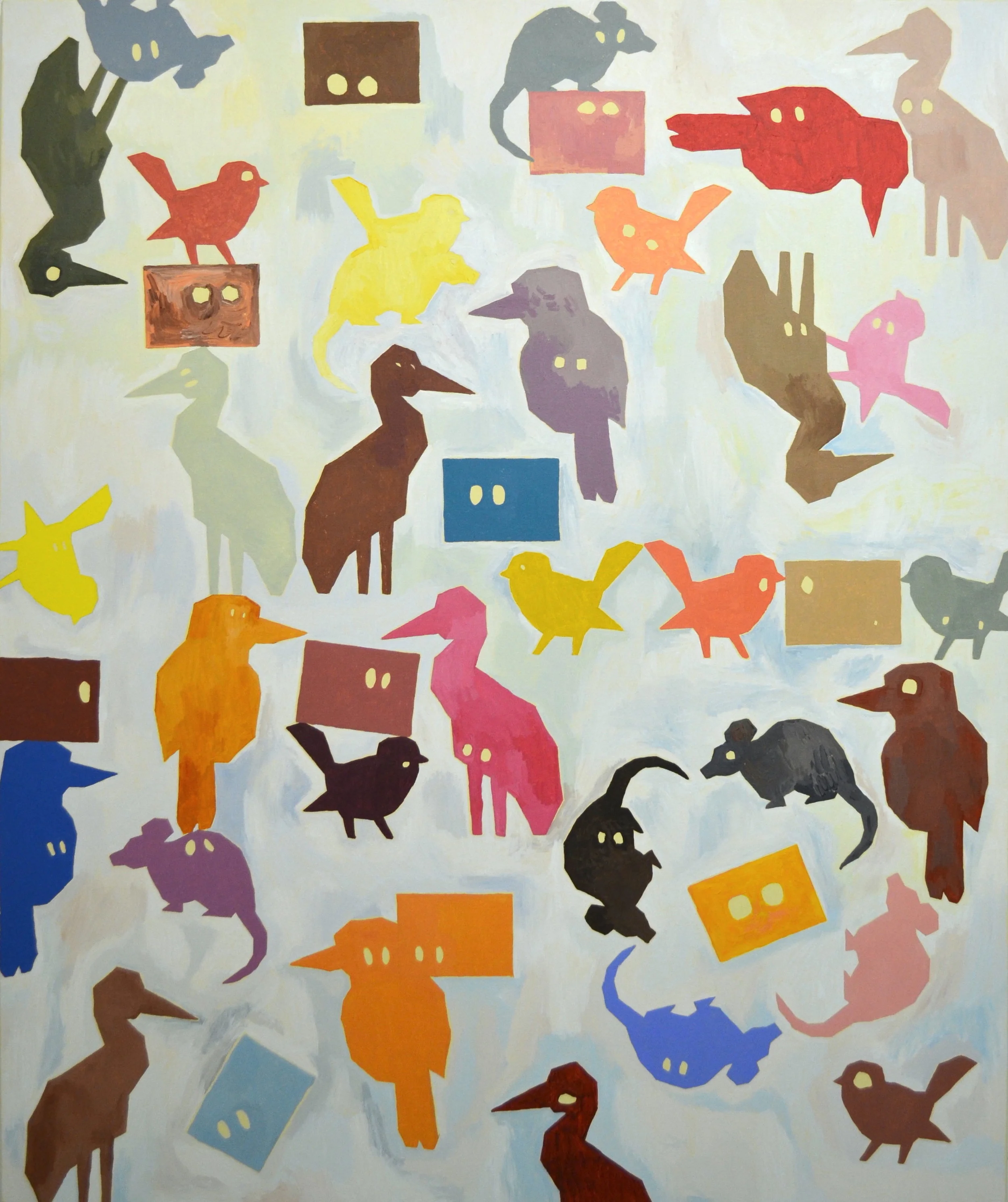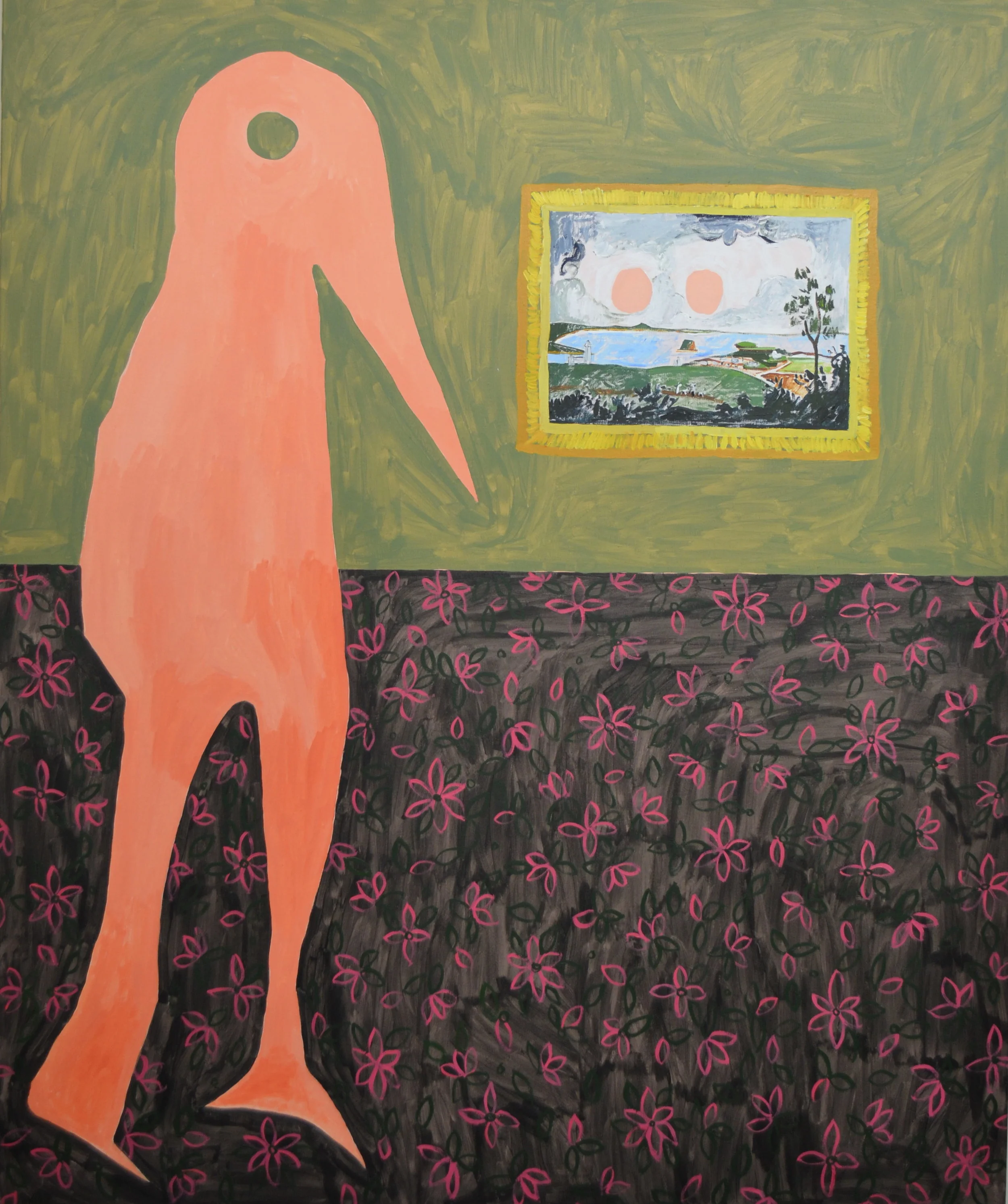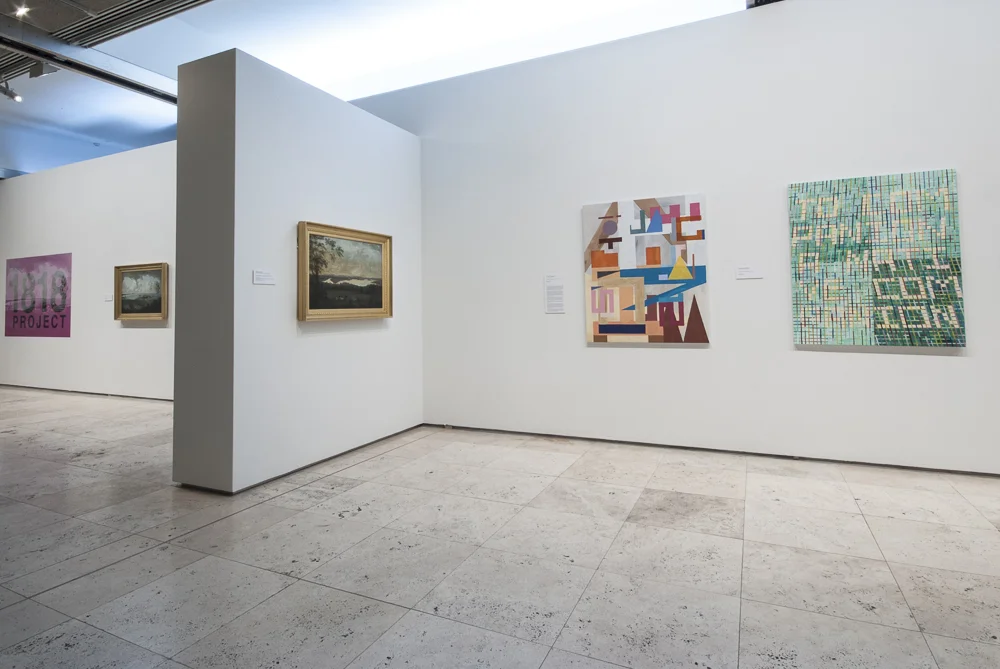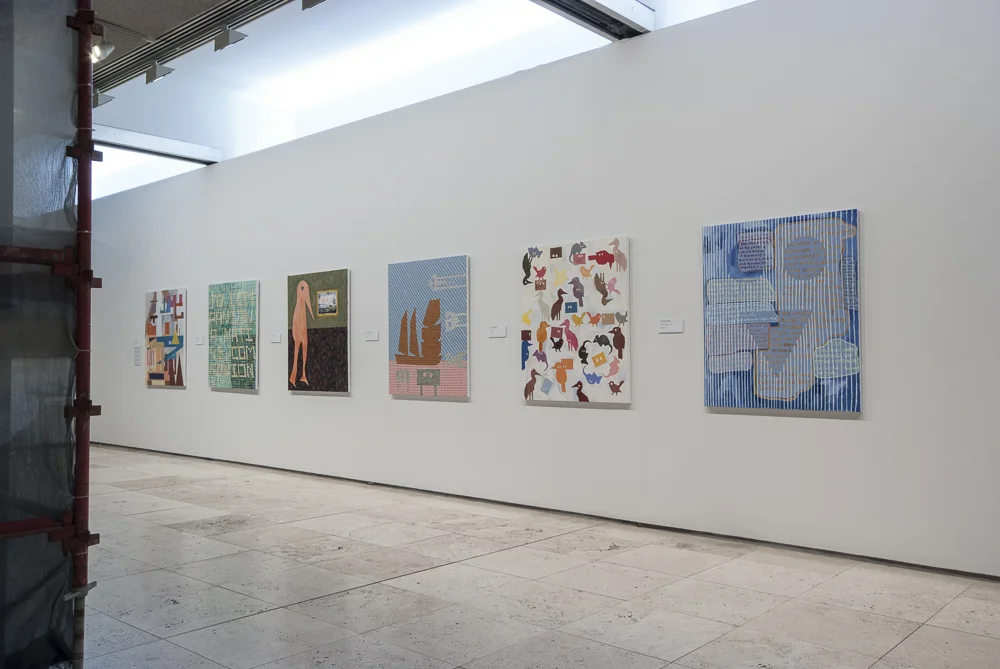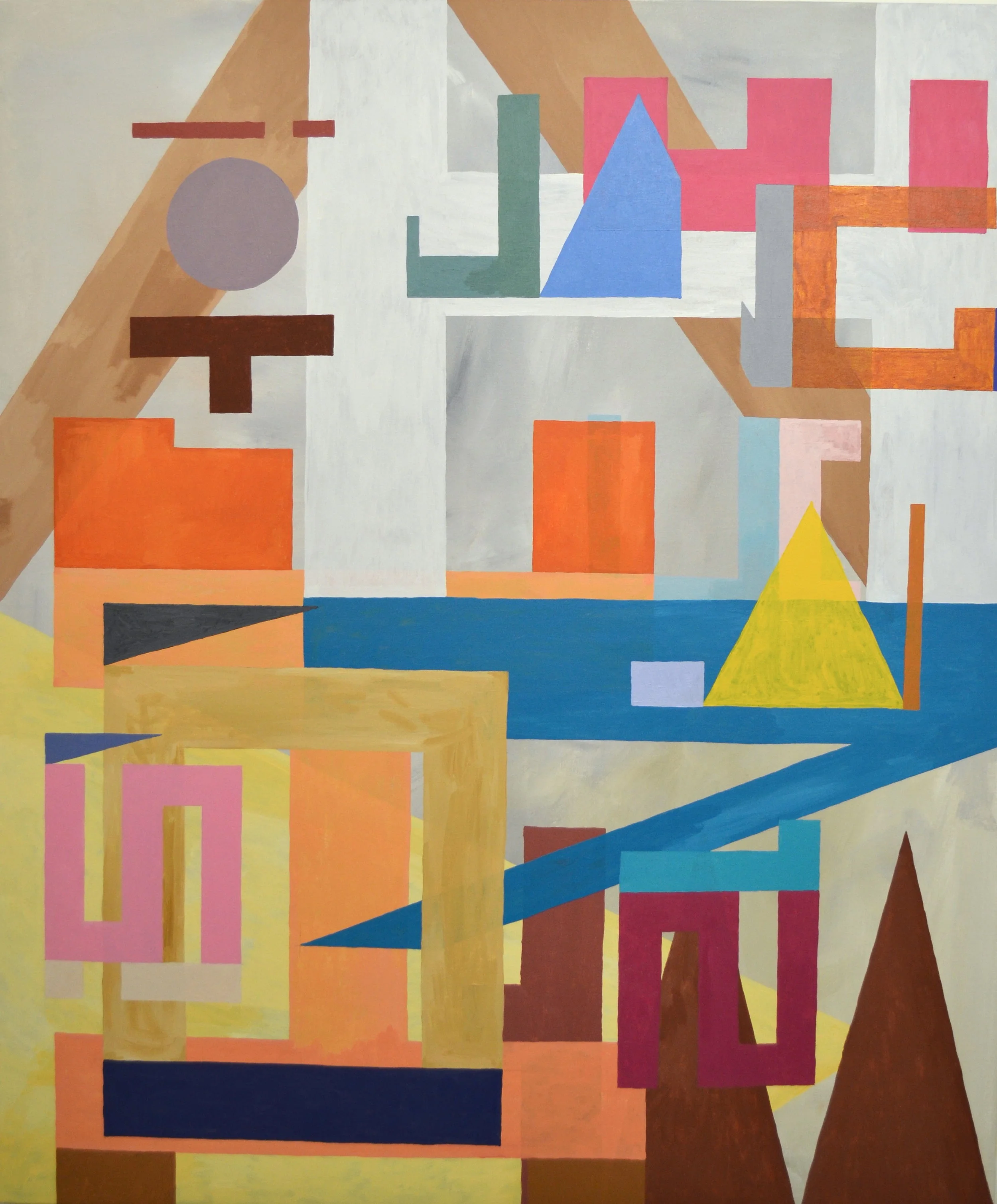Inner view of Coloniality (after Lycett) is a series of six paintings, each 120cm x 100cm each, acrylic on canvas, 2018.
This work was commissioned by Newcastle Art Gallery for the group exhibition The 1818 Project.
The 1818 Project, curated by Sarah Johnson, Newcastle Art Gallery, 8 September – 4 November 2018, Abdul-Rahman Abdullah, Shan Turner-Carroll, Dale Collier, Karla Dickens, Fernando do Campo, Lindy Lee, Yhonnie Scarce and Jacqui Stockdale. Alongside Joseph Lycett and other NAG collection artworks.
…
On March 3rd 1819, a convict ship called the Tottenham sailed from Sydney for India carrying Captain James Wallis, outgoing commandant of Newcastle (Coal River) to his new post in Kolkata (Calcutta)[1], and presumably accompanied by his precious painting ‘Inner View of Newcastle’ which he had commissioned from Joseph Lycett in 1817. The exact whereabouts of this painting were not known for a good century before turning up at auction in London where it was purchased by Newcastle Regional Gallery in the 1960’s[2].
We know that ‘Inner view of Newcastle’ trekked through nineteenth century colonial posts, and records show that this object was in the company of white men on board, who were primarily the men of the 46th Regiment which Wallis was in charge of as well as the many detachments that had arrived in Australia as guards of the transport of convicts[3]. In fact, not much else was departing these shores, during those years the Australian colony was trying to find a market staple that could enter the trade route, and one of the few things available was Coal River coal (Newcastle remains one of the world’s primary sources of coal)[4].
Lycett’s painting could have been titled ‘Inner View of Coloniality’, although as an object it was not in dialogue with the white men or the coal they carried, it had other companions. As is often the case, non-human casualties of humans’ social history go unnoticed. We can speculate on who came to the party. Black rats had arrived on Australia off Dutch ships decades before white settlement and became a ‘staple’ on any ship in between the colonies[5]. Laughing Jackass (Laughing Kookaburra) the largest kingfisher in the world, was abundant in NSW, and made a loud and impressive object of trade in other colonies[6]. House sparrows were also present at this meeting. They were not introduced into Australia till the 1860’s by the Victorian Acclimatization Society but in Calcutta they were native, and from there, they joined the conversation[7]. Native Companions (colonial name for Brolga)[8], as their namesake goes, must have hopped onto the ship, a ‘native companion’ to the painting.
This series of works use speculative fiction and painting to engage with the untold colonial narratives on non-human animals in order to ask difficult questions about the colonial project. Can we reverse colonial discourse via a gesture of care? The human-centric narration becomes secondary to the non-human animal’s way of being in the world. The human can then become companion, listener, friend; to a different hierarchy of narrative and one that potentially decolonizes humans. To ‘companion’ the ‘native companion’ is one strategy.
[1] https://www.jenwilletts.com/convict_ship_tottenham_1818.htm accessed August 3rd, 2018
[2] Conversation with Sarah Johnson, curator of The 1818 Project, Newcastle Regional Gallery, May 2018.
[3] https://www.jenwilletts.com/convict_ship_tottenham_1818.htm accessed August 3rd, 2018
[4] Hainsworth, D., R., The Sydney Traders, Cassel Australia, Melbourne, 1972 p113-114
[5] Banks, P., & Hughes, N., Rats in the ranks: the introduced black rat in Australia, ECOS Magazine, CSIRO, published online July 9th 2012 (accessed August 3rd, 2018) http://www.ecosmagazine.com/?paper=EC12344
[6] Long, J. L., Introduced birds of the world: the worldwide history, distribution and influence of birds introduced to new environments, Terry Hills, NSW, Australia: Reed, 1981
[7] Todd, K., Sparrow, London, UK: Reaktion Books, 2002, 7-16
[8] Gould, J., Handbook to the Birds of Australia, Volume 2, Oxford University, UK, 1865, p.290
